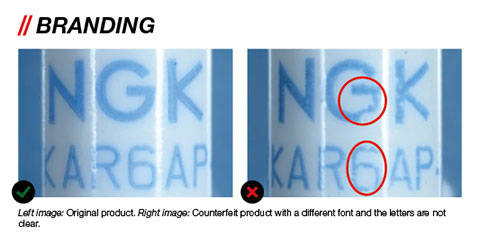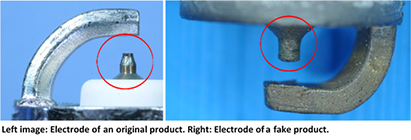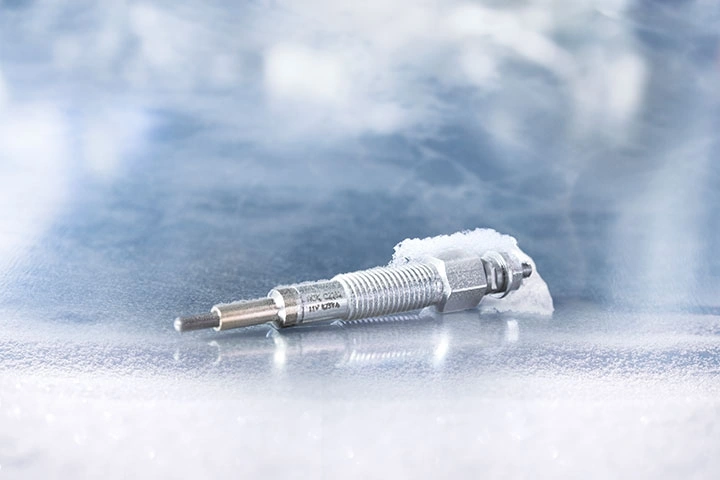Fake or not?

How do I identify fake spark plugs?
-
Inspect font type and signs of smudges on the spark plug
-
Look out for a machine cutting mark on the caulking (could indicate a counterfeit)
-
Check the hexagon for a LOT number and the correct font type
-
The C-groove portion show machine cutting marks (could indicate a counterfeit)
-
Have a close look at the electrode. Compare to a genuine product's electrode
A study published by the European Union’s Intellectual Property Office (EUIPO) shows that the loss to the European economy created by the presence of fake products amounts to 60 billion euros per year – equal to 7.5 per cent of European sales. Not to mention the individual harm caused to customers who were cheated.
But does it really matter if spark plugs are original products?
Yes, in fact it does. Niterra's Technical Service team recently became aware of cases where customers bought CR9EIX NGK spark plugs on the internet, which proved to be fake products. “These spark plugs melted and caused damage to our customers’ engines, which is annoying, costly and avoidable”, says Kai Wilschrei, Manager Technical Services Aftermarket EMEA at Niterra EMEA GmbH.
What’s the difference between the original and the fake?
“Original NGK CR9EIX spark plugs have a centre electrode with an iridium tip. This material has a very high melting point and is extremely hard and long lasting,” explains Kai. “The fake plugs, however, do not have any iridium on the centre electrode. They feature a standard Nickel electrode that was tapered down with a lathe, giving it the same optical impression as the iridium tip,” he continues. “This fake part is very weak and can’t stand the heat. This soft spot causes the centre electrode to melt, inflicting damage to the engine.”
What to do if in doubt?
Here is some expert advice from Niterra's Technical Service team: “If you have doubts whether your part is original, follow our 5-step-guide. Refer to the following images and compare each one thoroughly with the suspect product.”
1. Inspect font type and signs of smudges on the spark plug
Have a look at the product name on the spark plug. If the font type is different from the one shown in the photo on the left and if the font is smudged in some way, the product might be a counterfeit.

2. Look out for a machine cutting mark on the caulking (could indicate a counterfeit)
Take a close look at the crimping portion of the plug. If you can see a machine cutting mark on it, be alert: this is indicative of a fake product.

3. Check the hexagon for a LOT number and the correct font type
Next, check the hexagon. If there is no Lot Number and/or a different font type is used compared to the one shown below left, it’s not an original product.

4. The C-groove portion show machine cutting marks (could indicate a counterfeit)
Then look at the C-Groove portion of the spark plug. If you can see a machine cutting mark on the surface of the metal shell, again, this is a sign of a counterfeit.

5. Have a close look at the electrode. Compare to a genuine product's electrode
Lastly, take a close look at the shape of the electrodes. If yours differs from the left-hand picture, be warned.

What to do when you spot a fake product?
“Niterra recommends that you always buy from a retailer or supplier you trust. If you have already bought a counterfeit item, take legal action”, the expert concludes.
 Niterra Blogs
Niterra Blogs








